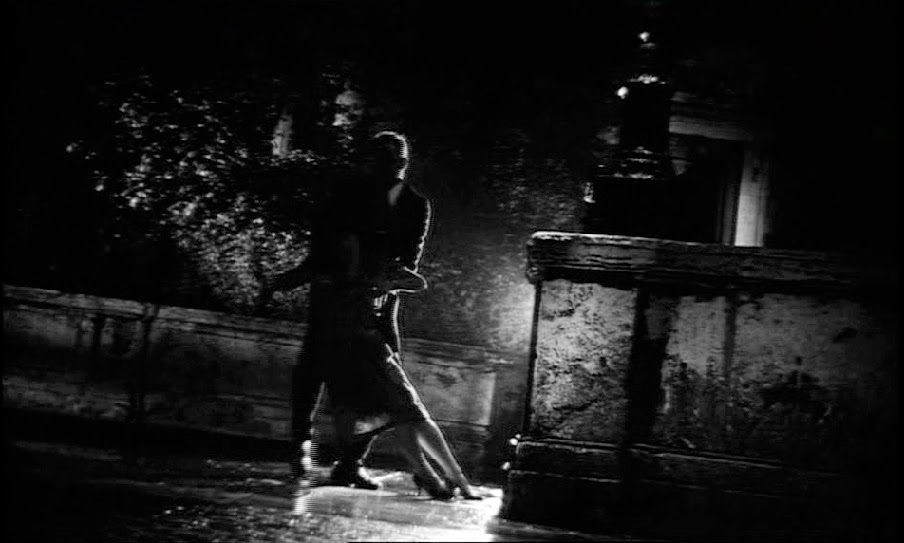The Girl Who Knew Too Much (La ragazza che sapeva troppo) is something of an oddity in Mario Bava’s filmography. It’s a movie I’ve overlooked until now and I must confess it’s not at all what I’d expected.
I had the impression that this 1963 thriller marked the birth of the giallo genre. Perhaps it does in some ways anticipate the giallo but it’s a long way from being a fully-fledged representative of that genre. For one thing, despite having Bava as director, it’s actually a rather low-key movie notably lacking in the spectacular visual set-pieces for which Bava is known (and for which the giallo is known).
Nora Davis (Letícia Román) is a young American tourist in Rome. After an odd encounter with a dope peddler at the airport Nora witnesses a murder. Nora loses consciousness (which may be because she sampled some of the aforementioned dope peddler’s marijuana cigarettes although this is not made particularly clear) and when she awakes there is no sign of a murder having taken place. No-one believes Nora’s story.
Nora is intimately concerned with another sudden death, that of the aunt with whom she was to stay in Rome. At the funeral she meets a mysterious woman who claims to be an old friend of her aunt’s and she is persuaded to house-sit for this woman.
Nora is convinced that she really did witness something sinister and her discovery of a file of newspaper clippings about a series of brutal murders of young women, known as the Alphabet Murders, seems to confirm her suspicions. She finally manages to persuade Dr Bassi (John Saxon), a young man who has befriended her and is clearly romantically interested in her, that something sinister really is happening.
A newspaper reporter named Landini (Dante DiPaolo) who had become obsessed with the Alphabet Murders provides further information but the mystery is still far from being solved and Nora has reason to believe she is in danger of becoming the Alphabet Murderer’s fourth victim.
This movie was apparently intended originally as a fairly breezy romantic comedy combined with a murder mystery, somewhat in the style of Hitchcock’s lighter offerings. Bava darkened the mood somewhat although the original romantic comedy elements are still obvious in places.
The title adds to the suggestion that Bava is moving into Hitchcock territory here and indeed this movie is the closest he came to making a Hitchcock-style suspense thriller.
There’s an obvious Psycho influence at work here although the violence is a lot milder than in Hitchcock’s film. In fact the violence really is downplayed quite considerably, to an extent that is enough to disqualify it as a genuine giallo. It’s certainly very mild compared to Blood and Black Lace which Bava would make not long afterwards.
The movie is, rather surprisingly, in black-and-white. While Bava had demonstrated with Black Sunday that he could do great things with black-and-white his reputation rests to a very large degree on his extraordinary mastery of colour. He may in fact be the greatest colourist cinema has produced. The use of black-and-white in this film does seem to cramp his style a little. That’s not to say that The Girl Who Knew Too Much is visually unimpressive (Bava could not have made a visually unimpressive movie if he’d tried) but colour was the means that Bava used to create the moods that he wanted and as a result this film lacks something when compared to his colour movies.
While this is a kind of Hitchcock pastiche there’s also in the climactic scene what appears to be (to me at least) a very definite nod to Fritz Lang’s Ministry of Fear. In fact there might also be a subtle reference to Lang’s The Woman in the Window.
Letícia Román makes a very appealing heroine while John Saxon is a perfectly adequate male lead.
Anchor Bay have come up with a very fine 16x9 enhanced transfer. The extras include a brief introduction to the film by Alan Jones and an interview with star John Saxon who has some amusing memories of his slightly strained working relationship with Bava.
The Girl Who Knew Too Much remains a slightly uneasy blending of a lightweight slightly comedic murder mystery and a proto-giallo. This is very much Bava Lite but it’s fairly stylish if undemanding entertainment and it definitely shows an unexpected side to Bava. Recommended, as much for is unexpectedness as anything else.





1 comment:
Good write up. Also your point about the film not being a giallo in the truest sense is something of a controversial POV, but one I share. Insofar as Bava is the father of the genre then it would be Blood and Black Lace that pretty much wrote the rules. This is more of a homage to Hitchcock than anything else really isn't it.
Post a Comment